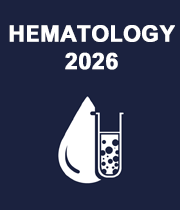Title : LncRNA MALAT1, post-transcriptionally stabilized by NSUN2-mediated M5C modification, exerts properties in bone lesions formation in multiple myeloma
Abstract:
Multiple myeloma (MM) is still an incurable disease and osteoclast-mediated bone destruction is a hallmark. Existing agents effectively reduce the number of osteoclasts (OCs) and prevent bone-related diseases but have little effect on overall survival. Investigating the potential mechanisms and developing novel agents against bone lesions are essential. Our study found that lnc MALAT1 expression was the highest in exosomes derived from MM cells, and it was significantly increased in MM cells compared with normal plasma cells in the GSE24080 and GSE5900 MM patient cohorts. The FISH examination revealed an obvious abundance of MALAT1 in bone marrow of MM patients. To demonstrate whether MALAT1 in U266 cells acts on macrophages via incorporating into exosomes, we labeled isolated exosomes with PKH26 dye and MALAT1 with GFP from U266 cells. The majority of the recipient cells exhibited a yellow signal in cytoplasm under the confocal microscope, suggesting that MALAT1 could be packaged into exosomes and swallowed by RAW264.7 cells. We directly influence MALAT1 expression in RAW264.7 cells. Overexpression of MALAT1 could upregulate RANKL expression and increase TRAP-positive OCs and mineralized nodules, while the knockdown of MALAT1 showed a reverse trend. The ability of MM exosomes in bone destruction was then verified in vivo by injecting U266 cells, U266 cells plus MM exosomes, and U266 cells plus MALAT1-knockdown-exosomes into the tail vein of NOG mice. The extent of the bone disease in each model was assessed by micro-CT. Parametric analysis using microCT revealed a significant decrease in the bone volume (bone volume/tissue volume) by exosomes, while when injecting MALAT1-knockdown-exosomes, we observed a reverse trend. Recent studies focused on the function of RNA modification in regulating lncRNAs expression. We found that MALAT1 level was strongly correlated with NSUN2 (R2=0.758) and YBX1 (R2=0.748) levels. To test whether and how m5C modification regulates MALAT1 expression, U266 cells were transfected with siRNA targeting NSUN2. Knockdown of NSUN2 significantly reduced the m5C levels of MALAT1. A rescue experiment showed that MALAT1 expression and stability increased by NSUN2 were reversed when transfected with YBX1 siRNA.
Audience Takeaway:
- LncMALAT1 was identified as the highest differentially expressed lncRNA in U266 exosomes and promoted bone lesions formation.
- Injection of exosomes increases MM-induced osteoclasts differentiation and bone lesions, possibly in part through MALAT1.
- NSUN2-mediated m5C modification of MALAT1 increases its stability in a YBX1-dependent manner.



